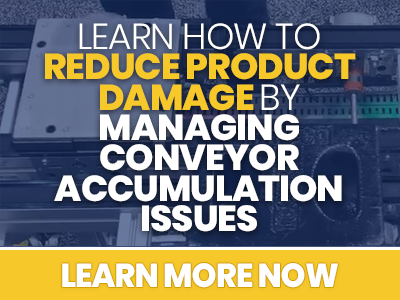As you’re building an automation system for your client, spending time to choose a conveyor configurator may be the farthest thing from your mind. But which conveyor software you choose could have lasting effects on your entire conveyor-based assembly automation system, including how much it costs, how long it takes to design and deliver, and even how creative you can be in your solution.
Consider these questions when evaluating conveyor design software to ensure you select the best fit for you and for your customers’ needs.
 Does the conveyor manufacturer have configuration tools?
Does the conveyor manufacturer have configuration tools? - Are the configuration tools easy to understand and use with your current software?
- Can you easily make changes within your assembly design? How much time does it take to make a simple change?
- Can you be innovative and creative with the technology and the conveyors offered?
- Is pricing available through that tool?
- Are the tool’s capabilities comprehensive, offering pricing, model numbers, and more – or just one or two pieces of the overall puzzle?
- Does the configurator allow me to create 3D solid models for my clients?
- Are the models accurate enough to design my equipment around?
- Do they have technical support or a conveyor design guide if needed? What is the average response time?
An in-context configurator like the one offered by Glide-Line (IMPACT!) makes changes easy by instantly mating any change directly into your SOLIDWORKS file using Excel. You can make edits on the fly. We struggled with these same issues before we created Glide-Line, and it’s one of the reasons we started the company and built our IMPACT! configurator.
IMPACT! is also very flexible; there are millions of configurations for the conveyors, many of which would be considered customizations from other manufacturers but are standard from Glide-Line’s conveyors. The best part? The pricing, model numbers, and any changes you make are available instantly, without needing to talk to a sales representative first.
Ask these additional questions when you’re considering a conveyor manufacturing partner:
- What is the lead time would I be looking at for a standard conveyor?
- How can I expect the equipment to arrive?
- Does the provider come up with new products - are they innovative in the industry?
- Do they have the best options, and are they pushing the industry forward?
- What was the last product they came out with, and what are they working on now?
Asking these questions can help you select a conveyor manufacturing partner who is innovative, flexible, and affordable – giving you access to the best options for any customer needs.
Follow these steps before getting started with a configurator to ensure you’re creating the best modular conveyor system for your customer.
- Understand your customer’s root issue. What are they hoping to accomplish? What’s at the heart of the reason they’re looking for a new automation system?
- Account for floor space in your customer’s current automation system area. Can their business benefit from flexible, creative alternative designs for the space to accomplish even more in the area they’ve designated?
- Identify what doesn’t work well for your customer’s existing solutions. Understand what it is about their current approach that’s not working for them. Is it simply that the conveyor portion of their automation system is too traditional and not flexible enough for them? If so, you’re able to think creatively using the conveyor systems from Glide-Line – look into some of these options for them.
Glide-Line’s IMPACT offers a unique set of design tools enabling quick and accurate configuration for applications engineers. These tools are built into a standard Microsoft Excel workbook and provide real-time visual feedback for part number elements, pricing, and delivery. If you’re a SOLIDWORKS user, they can also drive automatic and dynamic models in a real time environment.
Check out this video for more information about IMPACT! and see if it’s right for you.








Leave a Comment